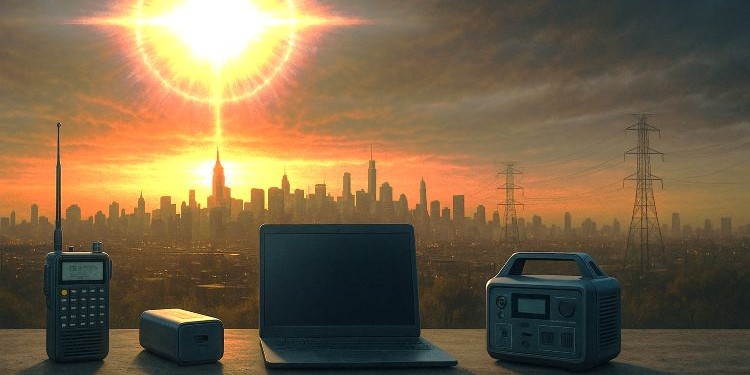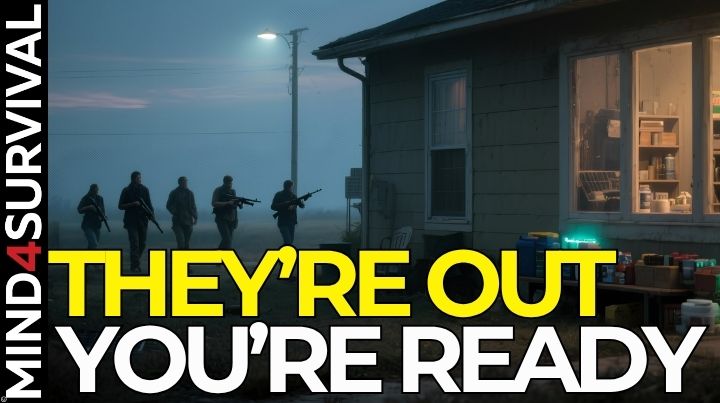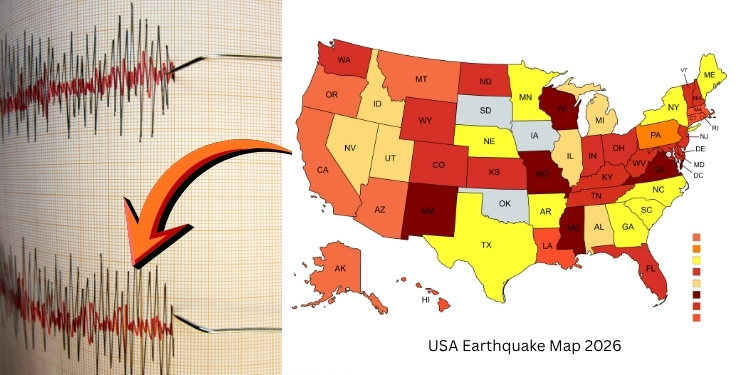How to Avoid Losing All Your Data in a Disaster

Podcast: Play in new window | Download
When people start thinking about emergency preparedness, they usually have concerns about food, water, and physical supplies such as toilet paper and first aid. But there is another aspect that is just as important: your data. This could include family photos, tax records, and records such as banking and medical records. Just losing your contact list stored on your phone could present a major problem.
Natural disasters are not the only threats to worry about. Cyberattacks are happening to more and more people and establishments, and they can be just as damaging as a flood or fire when it comes to your personal information. If you’ve never considered data preparedness, it’s certainly worth a look.
Here are ways to make sure your information is secure, your communication avenues stay open, and you have the backups you need if things go offline.
Quick Look at What You’ll Learn
Make Multiple Backups
It’s a good idea to keep multiple copies of your documents, as one backup is not enough. If your backup is stolen, corrupted, or destroyed, you’ll be out of luck. A lot of experts recommend the 3-2-1 rule:
- 3 copies of your data
- 2 different formats or storage types (like a hard drive and the cloud)
- 1 stored off-site
Here’s an easy way to get it done:
- External Hard Drive or SSD – Back up your files on a weekly or monthly basis. Keep the drive unplugged when you’re not using it to protect it from surges or ransomware.
- Cloud Storage – Services like Google Drive, iCloud, or Dropbox offer automatic backups. They’re handy, but don’t depend on them alone—cloud services can go down too.
- USB Flash Drive – Keep critical files (IDs, insurance, contacts) on a small, encrypted flash drive you can stash in your go-bag.
- Off-Site Copy – Store a backup with a trusted family member, in a fireproof safe, or in a safe deposit box. That way, if something happens to your home, your data isn’t gone with it.
Protect Against Cyber Threats
Even with backups, you still need to keep hackers out. Cyberattacks are increasing every year, and they can wipe out or lock down your files just as fast as a fire or storm.
Simple steps go a long way:
- Stronger Passwords – Use unique passwords for every account. I like to use a phrase such as “lovetoeatapples” with a random number. Some people like to have a password manager like Bitwarden or 1Password to keep their passwords safe.
- Two-Factor Authentication (2FA) – Add another step beyond a password. A code sent to your phone or generated by an app makes it much harder for hackers to break in.
- Watch Out for Phishing – Never click on suspicious links in texts or emails. Cybercriminals often disguise themselves as banks or service providers. I get a lot of texts from bogus sources pretending to be FedEx or Amazon.
- Keep Devices Updated – Updates often patch holes that hackers try to exploit. They can be inconvenient, but don’t put off doing your updates.
🏆 Pro Tip:Treat your accounts like your front door. You wouldn’t leave your door unlocked overnight, and you shouldn’t leave your digital life unprotected either.
Keep Communication Options Open
Losing data is stressful, but being unable to communicate during a disaster can be even more stressful. If the grid goes down or your phone dies, you don’t want to be completely cut off.
Try these low-tech ideas:
- Printed Contact List – I always tell my readers not to rely on the contact list on their phone. Write down all your important contacts’ phone numbers and addresses. Keep it in a waterproof pouch inside your emergency kit.
- Texts Over Calls – If networks are overloaded, send a text instead of calling. You have a better chance of getting through.
- Offline Messaging Apps – Some apps, like Bridgefy, can send short messages without cell service.
- Two-Way Radios – Inexpensive FRS/GMRS radios are great for short-range communication with family. Keep in mind that they have a limited range, so be aware of the range before buying.
- Ham Radio – For a serious long-range option, ham radio remains one of the most reliable ways to stay connected when everything else fails.
A mix of digital and analog tools ensures you’re not relying on a single, fragile system.
Don’t Forget Offline Tools
We have become so dependent on apps that we forget how to manage without them. Having offline backups for basic information and tools can save you frustration—and sometimes even save your life.
A few to consider:
- Paper Maps – GPS may fail, so always keep a backup city map or regional atlas in your vehicle.
- Printed Survival Guides – Keep a binder with first-aid basics, food storage charts, and other references. You don’t need a library, just the essentials.
- Manual Records – I have a small notebook for tracking expenses, account numbers, or due dates to keep track of balances if online banking is unavailable.
- Low-Tech Power Options – I also keep a solar charger and extra power banks for my devices.
- Entertainment – Books, puzzles, crafts, or a deck of cards may sound minor, but keeping your mind busy during long outages helps morale.
Test Your Plan
Every so often, run a simple drill: pretend the internet and power are down. Then ask yourself:
- Do I have access to my important documents?
- Can I reach family or emergency contacts?
- Could I find my way without GPS?
- Do I know my bank account numbers or insurance policy details?
If the answer is “no” to any of these, now’s the time to fix it—before a disaster happens.
Don’t Forget to Make Updates
Everyone makes changes in their financial lives-we change banks, switch insurance carriers, and file new tax returns. Don’t forget to add these to your backups whenever anything changes.
Covering the basics such as food, water, and supplies is great, but it’s easy to overlook the digital side of preparedness. But losing your data in a disaster—whether through a cyberattack or a blackout—can be just as rough as losing a stocked pantry. Writing this article made me think I actually have a few holes in my data disaster plan.
Start with the basics: back up your files, secure your accounts, and keep some information in print. Add offline communication tools and test your plan. It doesn’t take much time, but the peace of mind is worth it. When the unexpected happens, you’ll be glad you made those backups.
Additional Resources
Frequently Asked Questions
Why is data preparedness important in emergencies?
Data preparedness ensures you can access critical information—like medical records, ID, and contacts—when systems fail. It helps you stay informed, connected, and able to act during disasters.
What is the 3-2-1 backup rule?
The 3-2-1 rule means keeping three copies of your data, using two different storage types, and storing one copy off-site to avoid total loss.
What kind of data should I back up?
Back up essential items like ID documents, insurance policies, medical records, bank info, and emergency contacts. Add photos or plans you can’t afford to lose.
Should I store my backups in the cloud?
Yes—but also keep offline copies. Cloud storage is convenient but not foolproof. Combine it with physical backups like hard drives or USBs.
Read the full article here









